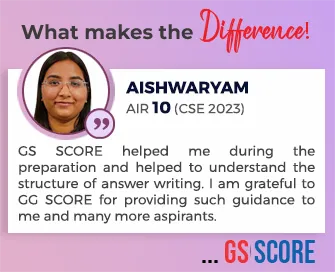

1st May 2025 (11 Topics)
Context
The Cabinet Committee on Political Affairs (CCPA) has recently approved the inclusion of caste enumeration in the upcoming population census, reversing the Union government’s previous stand. This comes amid increasing political demand for caste-based data, especially from the Opposition, and growing public discourse around social justice and representation.
What is a Caste Census?
- A caste census involves the enumeration of people based on their caste identity, along with other standard demographic data collected during the decadal Census.
- While data on Scheduled Castes (SCs) and Scheduled Tribes (STs) is already part of every Census post-independence, Other Backward Classes (OBCs) and general caste groups have not been officially counted since 1931.
- India continues to rely on outdated or sample-based estimates (like from the Mandal Commission or National Sample Survey) for assessing the population of OBCs, leading to uncertainty in policy formulation and resource distribution.
- Pre-Independence & Post-Independence Practice
- The last full caste enumeration took place in 1931. In 1941, caste data was collected but not published due to administrative and financial constraints during WWII.
- From 1951 to 2011, the Census has included only SC and ST data, not other caste groups.
- The Socio-Economic Caste Census (SECC) in 2011, conducted alongside the Census but under a different framework, gathered caste data—but that data has never been officially released.
- State caste surveys: Three governments — Karnataka, Telangana and Bihar — have conducted caste surveys so far. Karnataka is yet to release the survey report.
Why is there a demand for Caste Census?
- Legal Necessity: Accurate caste data is crucial for implementing and monitoring reservation policies in education, employment, and political representation. Supreme Court rulings (Indra Sawhney v. Union of India (1992), M. Nagaraj v. Union of India (2006), J.K. Industries Ltd. v. Union of India (2007), State of Uttar Pradesh v. Pradhan Sangh (2008), Vikram Dev Dutt v. Union of India (2022)) have emphasized the need for detailed caste data to uphold and define backward class reservations.
- Data for Targeted Welfare and Representation: Without updated caste data, it's difficult to assess whether reservation policies, welfare schemes, and economic development programs are reaching the right communities. OBCs are estimated to be around 50-52% of India’s population (Mandal Commission), but no official figure exists.
- Need for Evidence-Based Social Justice: Caste remains a powerful determinant of social and economic inequality in India. Many backward caste groups argue that caste data is essential to ensure fair representation in education, employment, and politics.
- State-Level Initiatives: Some states (e.g., Bihar) have already conducted their own caste surveys, creating momentum for a national-level enumeration.
Arguments Against Caste Census
- Risk of Reinforcing Caste Identities: Caste enumeration may further entrench caste divisions, which the Constitution aims to eliminate. They point to the vision of a casteless society championed by Dr. B.R. Ambedkar, warning that formalizing caste data could hinder long-term social cohesion.
- Complexity and Classification Challenges: Issues like overlapping caste names, state-specific variations, and the presence of open-ended or ambiguous categories (like orphans or converts) make data categorization highly challenging.
- Migrants, inter-caste marriages, and regional inconsistencies further complicate the classification process.
- Politicization of Identity: There is concern that caste census data could be misused for vote bank politics, electoral segmentation, and identity-based polarisation, rather than genuine welfare planning.
Fact Box: India’s Caste System
|
More Articles

